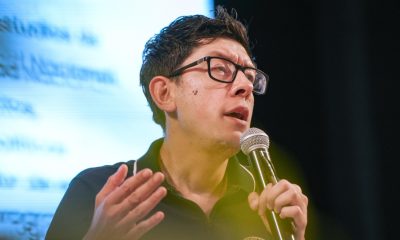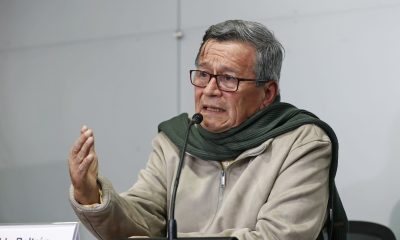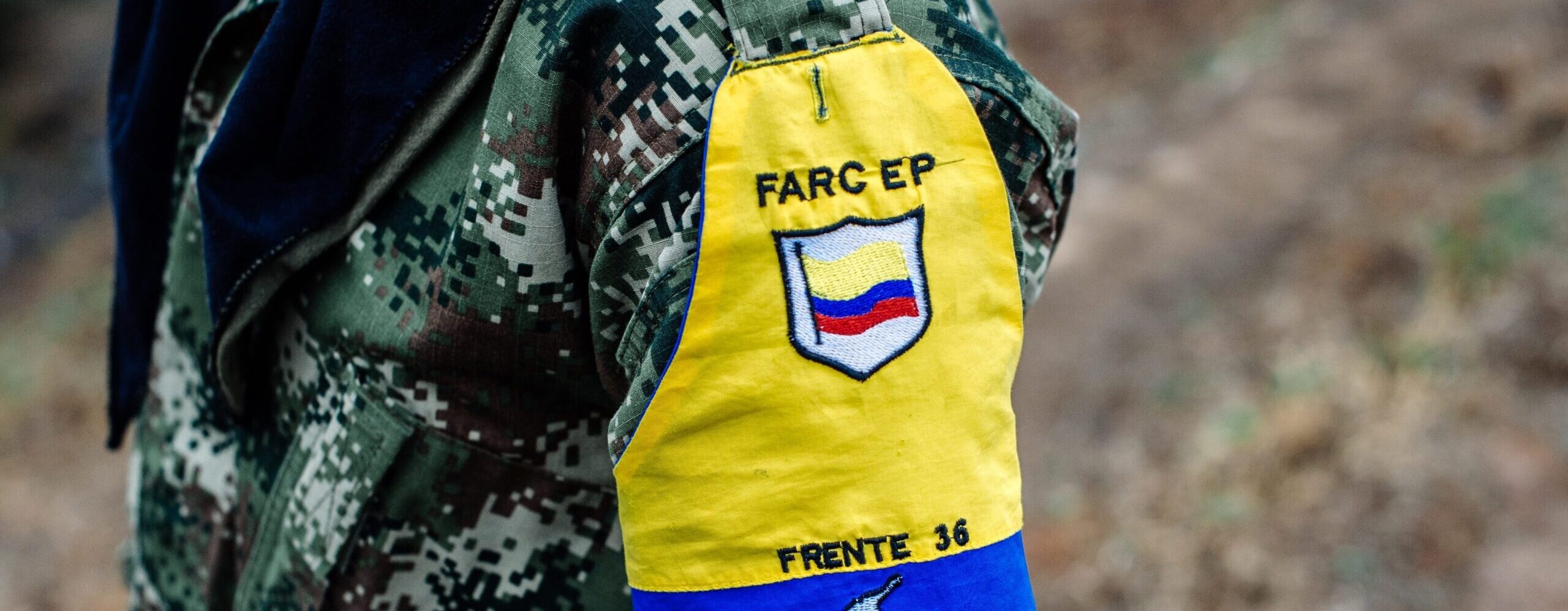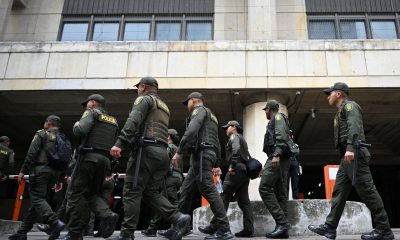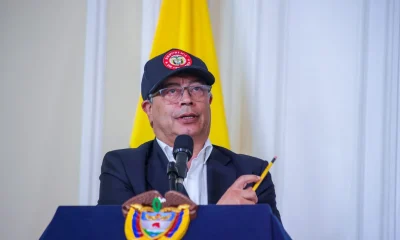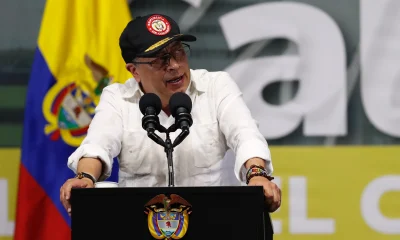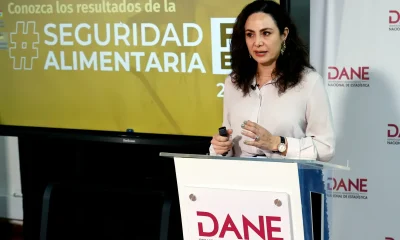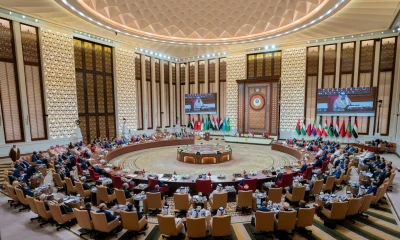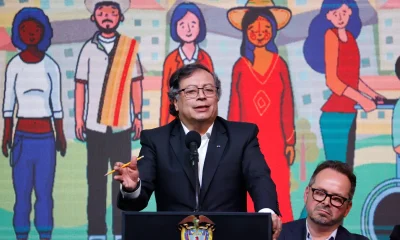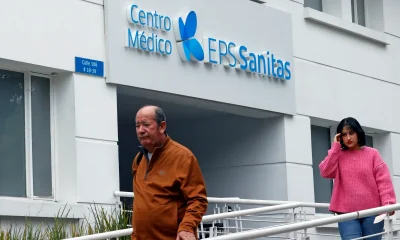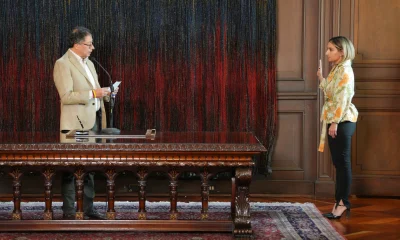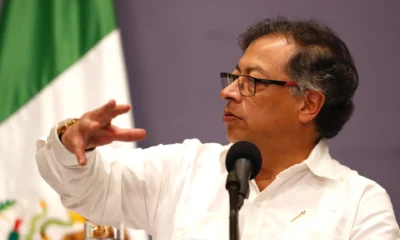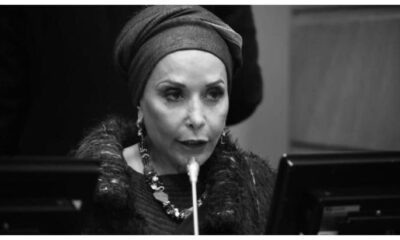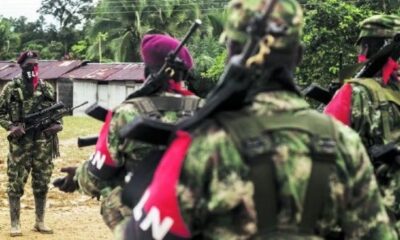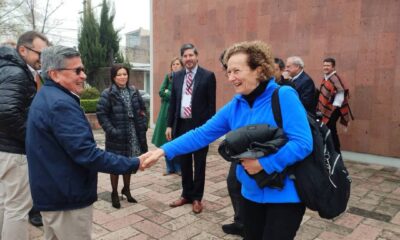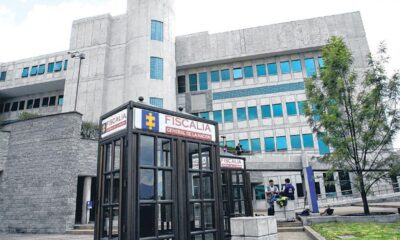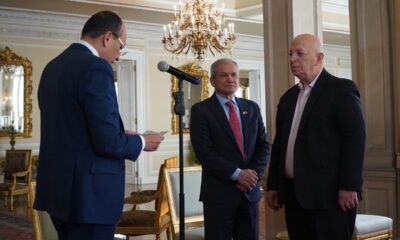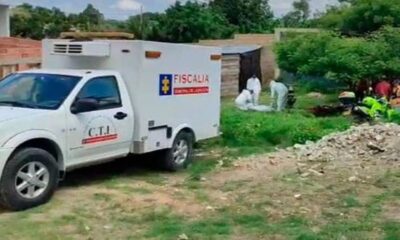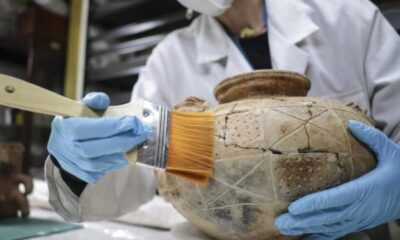International
Asking for permission to enter the house: the demand of Colombian indigenous people against Mennonites
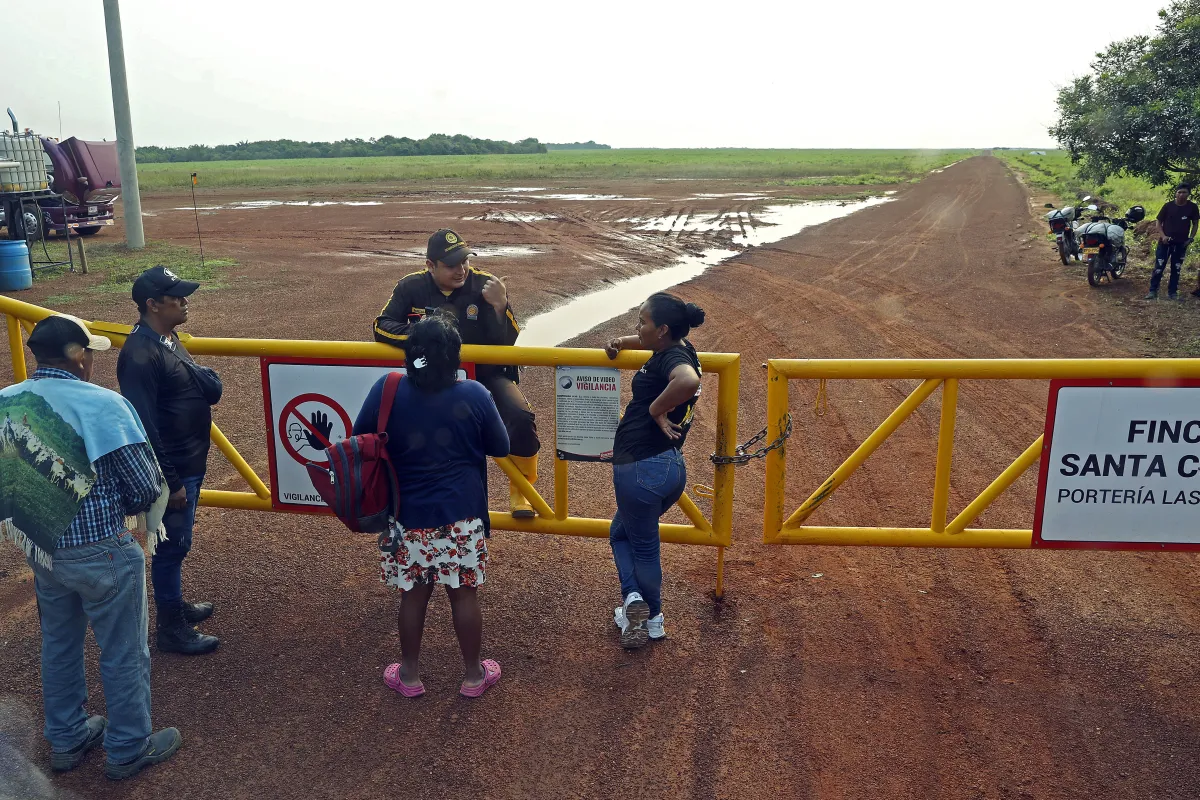
“Yesterday they returned us,” say the Sikuani indigenous authorities in front of the barrier that prevents them from entering their homes, waiting for authorization to continue, and denounce that their ancestral lands, in the Colombian department of Meta, are now owned by third parties who, they say, bought them irregularly.
On the Santa Catalina farm, owned by the meat company La Fazenda, they receive a refusal to pass by the entourage of journalists that accompanies them; they try their luck with the other entrance, that of the Mennonite ultra-religious community, which does authorize them to pass.
“Our grandparents are buried here,” says Jairo Ortiz in front of one of the sacred sites of the Sikuani, now in Mennonite territory.
“In times of violence they left here, they did not sell the land to anyone and left them thrown away, at that time other people who are not indigenous arrived and they took over,” says the captain, a position of authority of this semi-nomadad people displaced in several episodes of Colombian history.
In the Meta they lived until the so-called period of “violence”, which began in 1946, when they had to flee to the neighboring departments of Vichada and Guaviare. Then they returned but came back to persecution with the “guahibiadas” and “jaramilladas”, terms used to refer to the hunts of indigenous people to displace them from their lands and seize them.
A few years ago they returned to the land of their ancestors when the Colombian conflict lowered its intensity, but they realized that theirs was now in the hands of others, including the ultra-religious Mennite community that, coming from Mexico, found the promised land in the Colombian Oriental Plains.
The problem of land in Colombia is one of the great debts of the State; it is very difficult to know whose property each property is because many territories are not entitled.
Now, the 135 Sikuani families of this settlement claim their lands and denounce their appropriation and accumulation by foreigners.
The Mennonites, when they saw the potential of the Meta, hired a lawyer who advised them on the purchase of land, so “in principle” they are legal, explains Diana Quintero, a lawyer of the National Commission of Indigenous Territories, who accompanies the Sikuani in their lawsuit, explains to EFE.
The problem comes when the titles that the Mennonites bought are analyzed, awarded by the state National Land Agency because they were vacant of the nation.
The rule says the wastelands have to remain in the hands of their owner for a certain time, but those who were sold to the religious community did not meet this deadline and the indigenous peoples were not taken into account.
Another alleged irregularity, Quintero continues, is that the allocation of vacant lots has a limit of hectares, something called the Family Agricultural Unit (UAF), and the owners of these lands acquired more than allowed by law, incurring hoarding.
Quintero maintains that the Mennonites hoard because “although they say they are different families, they are part of a nucleus” and link all their lands in the same production process, exceeding the legal limit of UAF.
“Two years ago the Mennonites began to enter little by little. He could not be told anything because they have someone who supports them,” explains Alexander Álvarez, governor of the Iwitsulibo community, which brings together 80 families, in reference to the alleged alliances of the religious community.
According to the indigenous people, in the area there is the presence of paramilitaries of the Gaitanist Self-Defense of Colombia (AUC), allied with the Mennonites to provide them with security. They travel with motorcycles without a license plate and do not identify themselves, while all the Sikuani authorities report having received threats for their demands.
The Sikuani demand a total of 58,000 hectares to be distributed among the four communities and ask for a receipt to be made. Tsabilonia is the community that is closest to getting its claims, since it has been awarded – pending formalization – a territory in extinction of domain that belonged to drug traffickers, but they demand more hectares.
At the entrance of Tsabilonia the difference in the use of the land made by both communities is visible: on the Mennonite side there is not a single tree, only hectares waiting to be cultivated, and on the Sikuani side, pasture and native vegetation.
“They are pressuring us, we are being contaminated by foreign Mennonites who come from Germany, Canada and Mexico,” denounces Albarrubiela Gaitán, the traditional authority of the Barrulia territory: “We want to be calm in our territory, cultivating our uses and customs because as indigenous people we need our motherland to live in peace and freedom.”
The plantings of the Mennonites arrive almost at the door of the house of Albarrubiela; for the moment, the religious community continues to expand the agricultural border while the Sikuani expect the Colombian Justice to issue a decision on a land that went from hope to dispute.
International
Washington declares State of Emergency as atmospheric river brings severe flooding
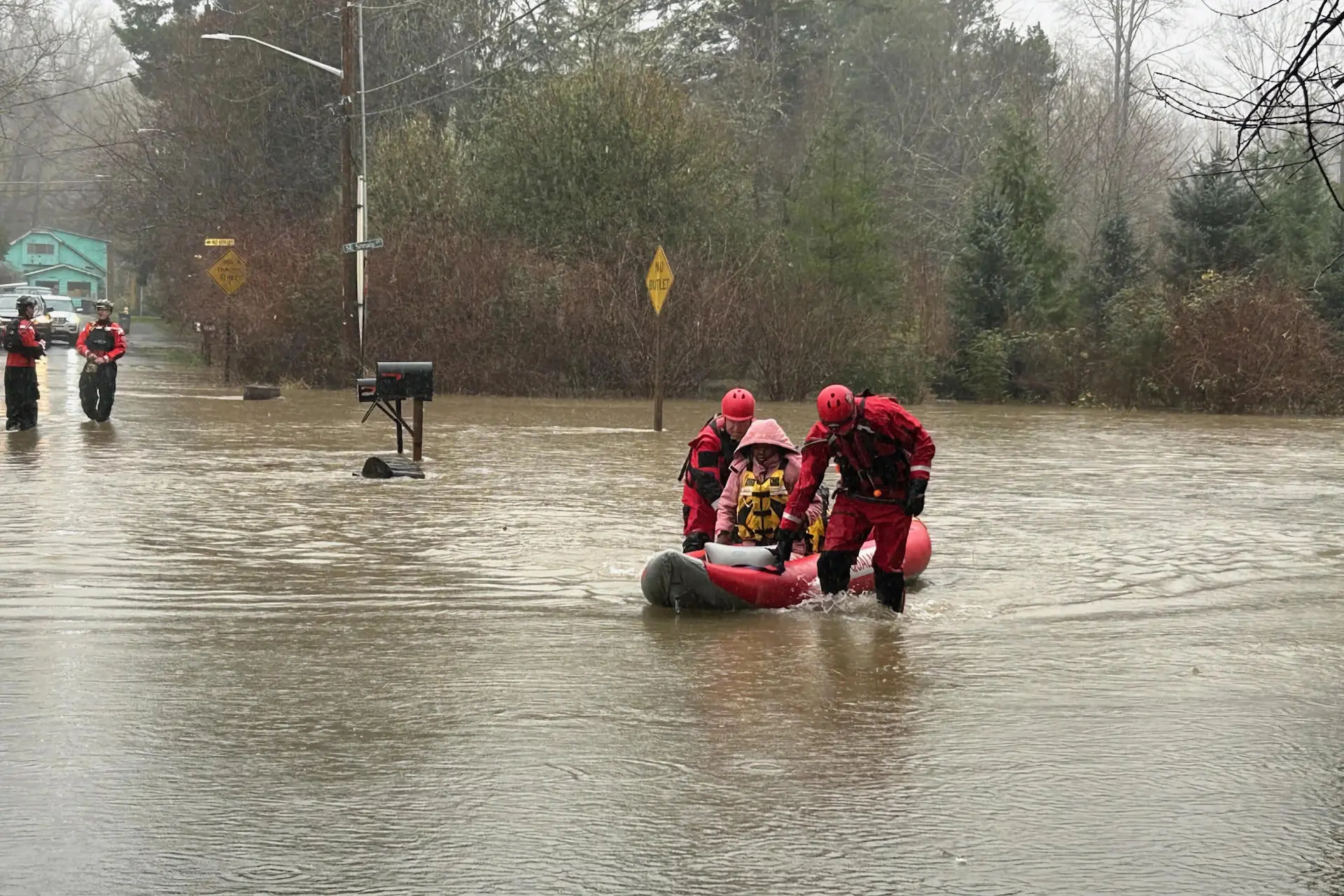
Washington Governor Bob Ferguson declared a state of emergency on Wednesday in response to severe flooding affecting several counties, where more than 75,000 people remain under evacuation alerts following heavy rainfall that has caused significant water accumulation.
An atmospheric river has battered the state since Monday, dropping several centimeters of rain and threatening serious flooding in communities near major rivers. More precipitation is expected in the coming days, and the National Weather Service (NWS) has forecast between 15 and 20 centimeters of rain from Wednesday morning through Thursday afternoon in communities along the far western region, worsening the emergency.
Rainfall totals in higher elevations near the Canadian border could exceed 20 centimeters, further increasing the risk.
“Lives will be at stake in the coming days,” Ferguson warned during a press conference.
The governor underscored the severity of the situation and said he will request an expedited federal disaster declaration from President Donald Trump’s administration to access additional resources for the emergency response.
“I want to urge all Washington residents to pay close attention to alerts from their counties and emergency management departments. If you receive an evacuation order, please follow it,” he added.
Most rivers from the Canadian border down to southwestern Washington are in flood stage. Several are expected to reach record levels, including the Skagit River, which could exceed its 1990 flood peak when water levels rose 1.2 meters.
Around 75,000 people are at risk of flooding in Skagit County, where authorities continue to maintain an evacuation watch.
The Washington National Guard and the U.S. Army Corps of Engineers have been activated to assist with evacuations and response efforts in rural areas affected by flooding.
International
U.S. to require five-year social media history from tourists under Visa Waiver Program

Tourists from 42 countries covered by the U.S. Visa Waiver Program would be required to provide their social media history from the past five years in order to enter the United States, according to a new proposal released Wednesday by the administration of President Donald Trump.
The initiative, led by U.S. Customs and Border Protection (CBP), aims to more thoroughly review the activity of travelers entering the country through the Electronic System for Travel Authorization (ESTA). When asked about the plan’s potential impact on tourism, Trump insisted that the United States is “doing very well.”
“We just want people to come here and be safe… We want to make sure we’re not letting the wrong people into our country,” the president said during a press conference at the White House.
The proposal, published in the Federal Register, seeks to expand the information collected from visitors entering the U.S. for up to three months under the visa waiver program.
ESTA applies to travelers from 42 countries, including the United Kingdom, Ireland, New Zealand, Australia, France, Japan, Israel and Qatar.
In addition to requiring a five-year social media history, the plan would increase the amount of personal data requested, such as phone numbers and email addresses used over the past ten years. It also calls for family details, including names, dates of birth and places of birth of the traveler’s relatives.
The proposal further includes a new mobile tool that would allow any foreign visitor to record their departure from the United States.
International
Six ecuadorian soldiers jailed pending trial for alleged extrajudicial execution
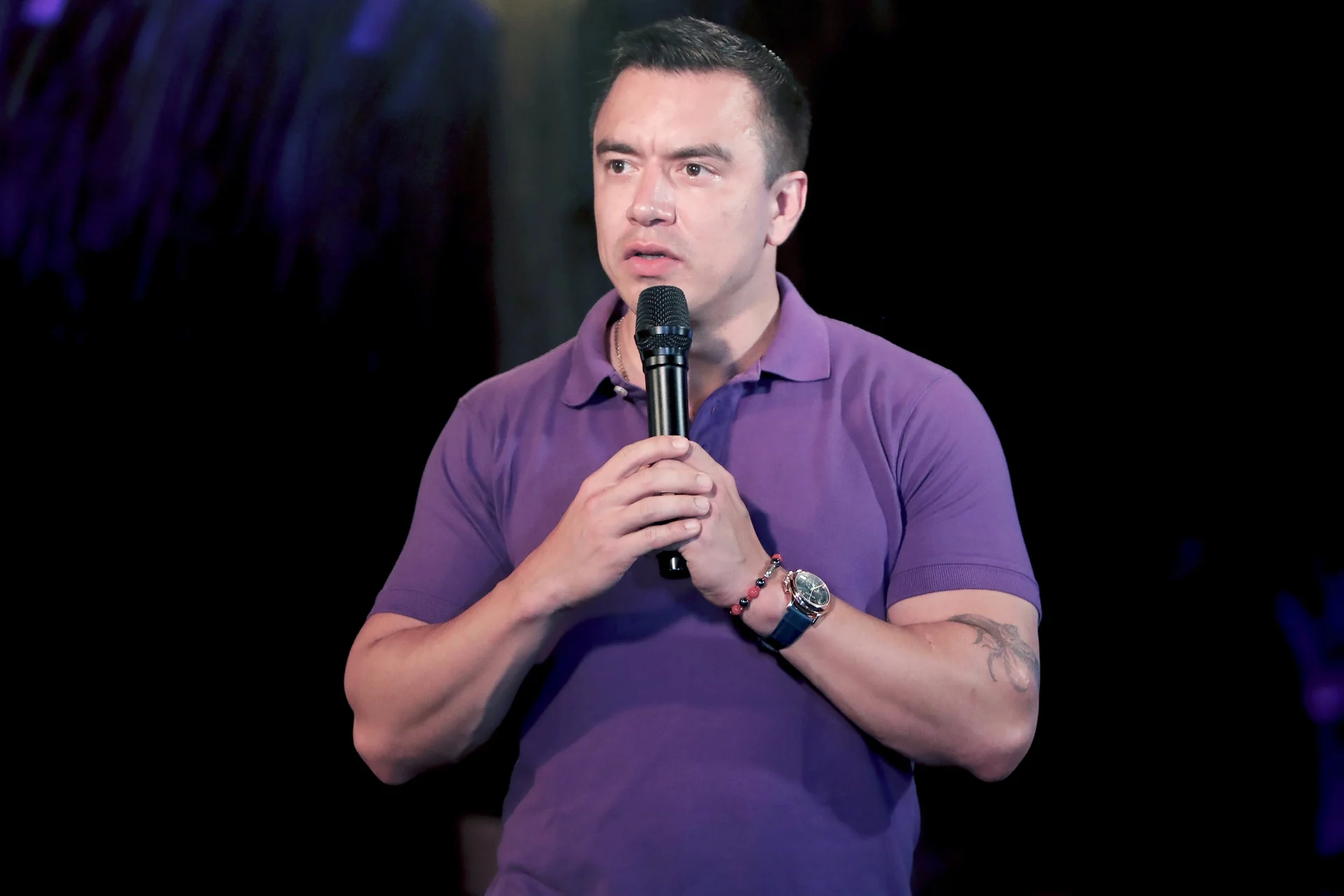
Six Ecuadorian soldiers were placed in pre-trial detention on Wednesday by a civilian court over an alleged extrajudicial execution, the Attorney General’s Office reported.
As part of his war on drug trafficking, President Daniel Noboa declared an internal armed conflict in 2024 and deployed the Armed Forces to the streets. Human rights organizations have since denounced military abuses and a rise in disappearances attributed to state agents.
A judge in the coastal province of Santa Elena ordered pre-trial detention for six soldiers for alleged extrajudicial execution, the prosecution stated on X. It added that the troops, now under investigation for the suspected crime, were in charge of an operation in the resort town of Salinas, during which one of the detainees died.
In a separate case involving alleged abuse of authority, a group of 17 soldiers is currently on trial for the forced disappearance of four minors whose bodies were found burned near an Ecuadorian Air Force (FAE) base.
In December 2024, Saúl Arboleda, Steven Medina, and brothers Josué and Ismael Arroyo — aged 11 to 15 — were detained by a military patrol in southern Guayaquil.
According to Amnesty International, Ecuador’s Prosecutor’s Office has received reports of at least 43 possible cases of forced disappearance since 2023, the year Noboa took office pledging a tough stance against organized crime.
-
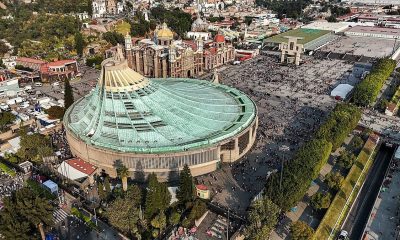
 International2 days ago
International2 days agoMexico City prepares for 13 million pilgrims at Basilica of Guadalupe
-

 Central America3 days ago
Central America3 days agoGuatemalan soldier wounded in clash with suspected mexican armed group near border
-

 Central America3 days ago
Central America3 days agoMexico and Guatemala launch joint security operation after Agua Zarca border attack
-

 Central America3 days ago
Central America3 days agoGuatemala reverses asset seizures after judge replacement, benefiting ex-president and former ministers
-
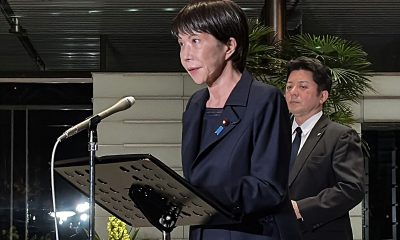
 International3 days ago
International3 days agoJapan lifts tsunami alert after strong 7.6-magnitude earthquake hits northern coast
-

 International18 hours ago
International18 hours agoU.S. to require five-year social media history from tourists under Visa Waiver Program
-
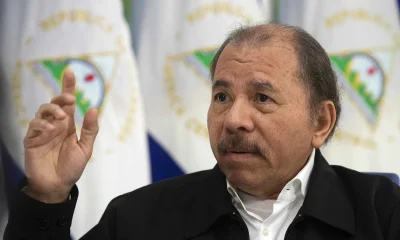
 Central America2 days ago
Central America2 days agoU.S. accuses Ortega regime of systematic human rights abuses in Nicaragua
-
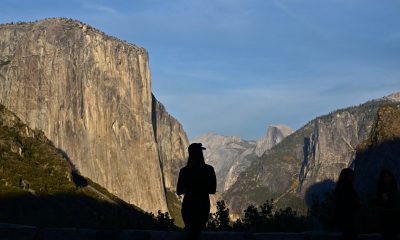
 International3 days ago
International3 days agoInterior Dept. redefines 2026 Patriotic Days, sparking criticism over removed civil rights holidays
-
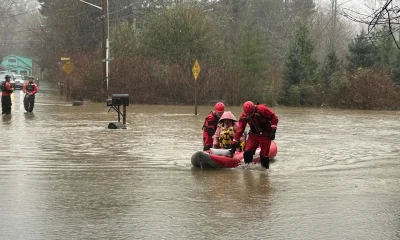
 International18 hours ago
International18 hours agoWashington declares State of Emergency as atmospheric river brings severe flooding
-

 Central America3 days ago
Central America3 days agoHonduran University: Nullifying elections without proof of fraud undermines popular sovereignty
-

 Central America2 days ago
Central America2 days agoHonduras’ electoral chief reports ongoing technical issues but says results remain intact
-
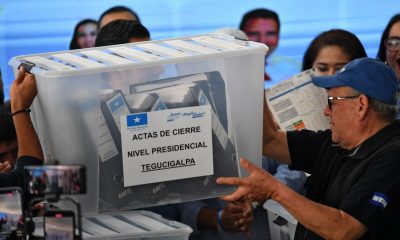
 Central America2 days ago
Central America2 days agoU.S. finds no evidence of fraud in Honduras election despite delays
-

 Central America3 days ago
Central America3 days agoCNA director says Libre’s defeat stems from “lack of substance,” not messaging
-

 International3 days ago
International3 days agoZelensky meets Pope Leo XIV as review of U.S. peace plan continues
-

 Central America18 hours ago
Central America18 hours agoOAS and EU urge honduran political actors to respect vote results and avoid unrest
-
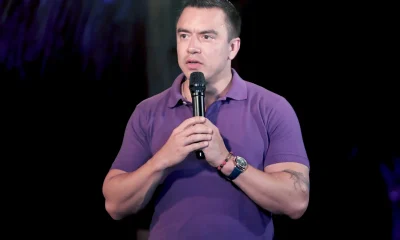
 International18 hours ago
International18 hours agoSix ecuadorian soldiers jailed pending trial for alleged extrajudicial execution































